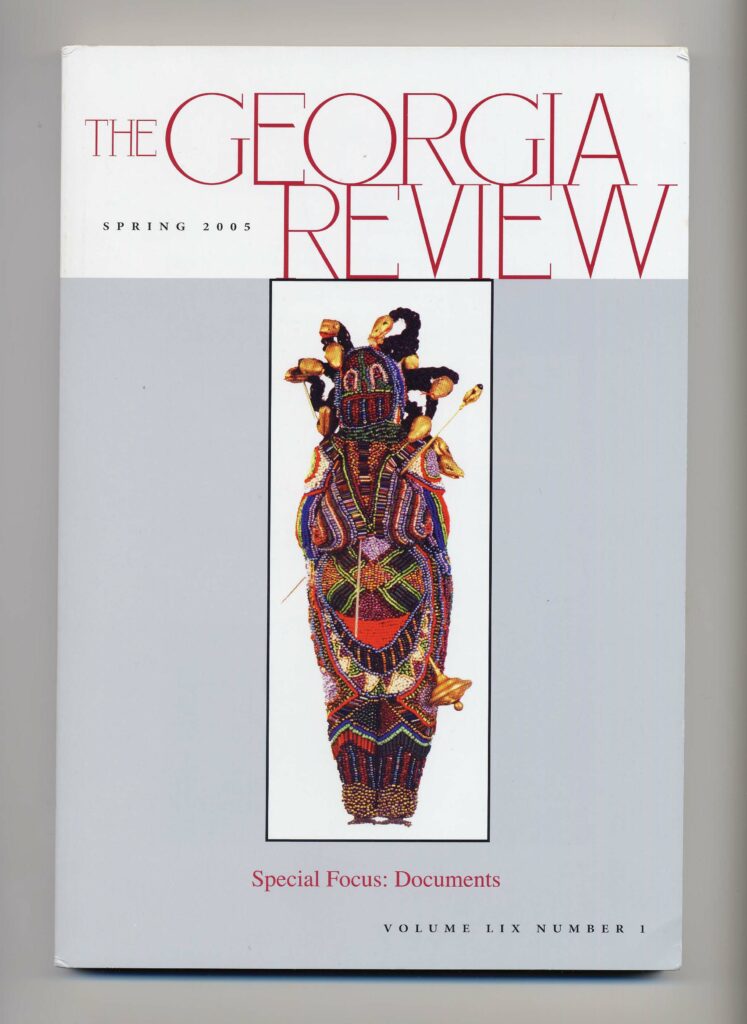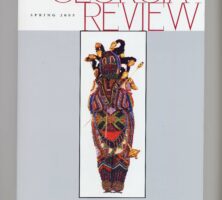The Georgia Review is an internationally distributed quarterly journal of arts and letters featuring general interest and interdisciplinary essays as well as short stories, poems, book reviews, and full-color visual art. First published in 1947 at the University of Georgia (UGA) and based there to the present day, this highly regarded literary periodical has published such notable authors as Conrad Aiken, Harry Crews, Rita Dove, William Faulkner, Robert Frost, Ernest J. Gaines, Joyce Carol Oates, Anne Sexton, Robert Penn Warren, and Eudora Welty. At the same time, the Review has earned a reputation for being open and encouraging to lesser-known and even unpublished writers.
Founding and Editorship
Founded by UGA English professor John Donald Wade, the Georgia Review was initially intended to be confined “to topics that bear somewhat closely upon the history, literature, art, education and social activities” of the state. Wade maintained this editorial perspective throughout his tenure as editor (1947-50), as did his two immediate successors, John Olin Eidson (1950-57) and William Wallace Davidson (1957-68). Although the journal’s scope and reach inevitably broadened somewhat over its first two decades, James Colvert (1968-72) was the editor who purposefully set his sights on moving the Review toward national recognition in its field, and his larger ambitions were taken to heart by all the subsequent editors: Edward Krickel (1972-74), John T. Irwin (1974-77), Stanley Lindberg (1977-99), Stephen Corey (2000-2001; 2006-present), and T. R. Hummer (2002-6).

Awards and Milestones
Since the 1980s, the Georgia Review has been widely considered one of the finest literary publications in the United States, with work from its pages regularly reprinted in such leading annuals as The Best American Short Stories and The Pushcart Prize. Perhaps even more impressive are the nearly twenty finalist nominations the Review has received in the National Magazine Awards competition, where the journal competes against not only other literary publications but also such large-circulation magazines as the New Yorker, the Atlantic Monthly, and Harper’s.
In 1986 the Review marked its fortieth anniversary of continuous publication with two oversized retrospective issues featuring the best short stories (spring) and the best poems (fall) from the journal’s first four decades. These gatherings, edited by Lindberg and Corey, subsequently came out in book form from the University of Georgia Press as Necessary Fictions: Selected Stories from the Georgia Review (1986) and Keener Sounds: Selected Poems from the Georgia Review (1987). Also in 1986, the Review won the National Magazine Award in Fiction with stories by Lee K. Abbott, Gary Gildner, and Mary Hood.
During Lindberg’s years as editor, the Georgia Review initiated several major literary conferences: in 1985 “Roots in Georgia” brought nearly two dozen Georgia-born writers to Athens for several days of readings, talks, and panel discussions. Among those on the program were Erskine Caldwell, James Dickey, Mary Hood, James Kilgo, and John Oliver Killens. In 1995, at Lindberg’s suggestion and in conjunction with the 1996 Olympic Games, the Carter Center in Atlanta hosted “The Nobel Laureates of Literature: An Olympic Gathering.” This landmark event brought onto one stage eight Nobel laureates of literature—more than had ever before been together. In 1997 the Review celebrated its fiftieth anniversary in Athens with a festival that invited all past contributors to visit and participate. Across three days, nearly fifty writers took the podium of the UGA Chapel.

Courtesy of University of Georgia Photographic Services
A double issue (winter 2001/spring 2002) offered a retrospective of essays from the first half century of the Georgia Review, including work from Jacques Barzun (1952), Robert Graves (1962), Harold Bloom (1975), Raymond Carver (1983), Donald Barthelme (1985), Eavan Boland (1990), Albert Goldbarth (1992), Barry Lopez and Louise Erdrich (both 1993), and N. Scott Momaday (1996), as well as a posthumous offering from Randall Jarrell (1996).
In 2007 the Georgia Review celebrated its sixtieth anniversary with a special issue and a series of readings. That same year, the publication received a Governor’s Award in the Humanities, in addition to seven GAMMA awards, given by the Magazine Association of the Southeast, and the National Magazine Award in Essays. In 2008 the journal received another seven GAMMA awards and was a finalist for a National Magazine Award in the General Excellence category.
The Georgia Review continues to publish outstanding writing in several genres by both established and new literary artists, and its long-standing national and international reputations seem secure.








